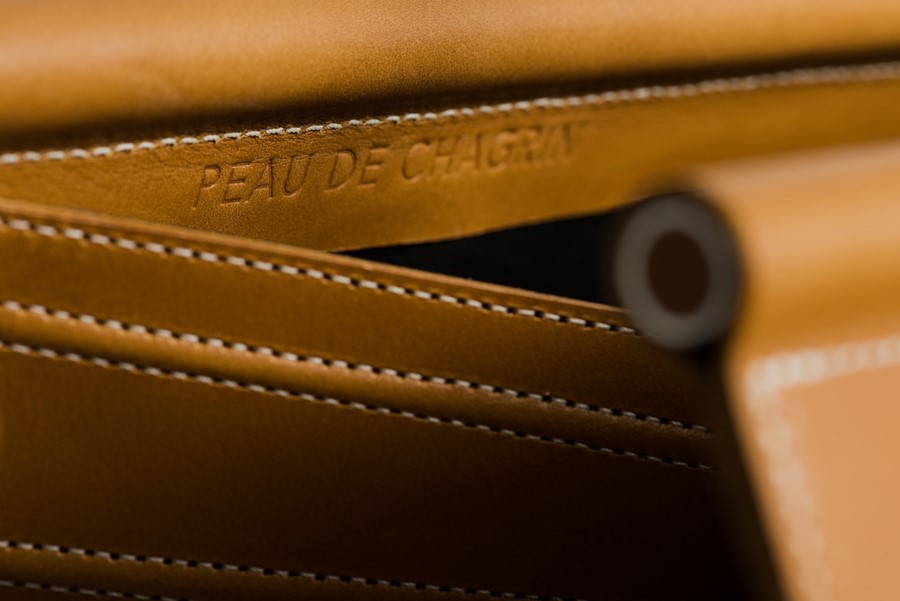For the first in a three-part series on fashion influenced by fiction, Osman Ahmed investigates Peau de Chagrin, an artisanal Balzac-inspired label creating heirloom-worthy accessories
Set in early 19th-century Paris, La Peau de Chagrin (1831) by Honoré de Balzac tells the story of a young man, Raphaël de Valentin, who makes a Faustian pact to fulfil his excessive bourgeois desires at the cost of his soul. The protagonist is given a piece of shagreen leather that will provide him with his every request, and as forewarned, it diminishes along with his health and sanity as he wishes himself to death. The novel, a meditation on consumption and morality, seems like an antidote to the modern fashion industry and its barrage of products; the several-looks-a-day street style peacocks that punctuate fashion week would surely combust within a single day if faced with a similar storyline.
“It just spoke to us and felt weirdly relevant,” explains Mesh Chibber, co-founder of luxury maison Peau de Chagrin, which takes its name from the aforementioned Balzac tale. Chibber is something of an industry veteran; he started his career as John Galliano’s publicist in the early 1990s and subsequently launched RMO, one of London’s leading PR agencies on this side of the millennium. Having left the world of PR in 2014, he found himself in need of a project that felt pertinent to this day and age. So, he partnered with a friend, Sofie C. Guerrero, and the pair set off on an eight-month train journey through Europe in search of small ateliers and individual craftsmen who use traditional leather and silk techniques to make truly luxurious objects, intended to last for decades, at a time-laboured pace. “Today’s luxury brands have had to compromise on quality – brands went from making tens of millions of dollars in the 80s, to hundreds in the 90s and billions by the 2000s, and you just can’t do this kind of production on that scale.”

The first object that Peau de Chagrin embarked on producing was a leather bag based on one found in a flea market years before. The simple-shaped boxy bag, complete with a curved structure and corseted sides, is made by a single artisan in the Swiss Jura mountains, from chrome-free, vegetable-tanned brown leather sourced in Belgium. It’s a classic item that one can imagine ageing incredibly gracefully. The bag was soon followed by a silk scarf, inspired by a map designed by Jacques Gaffarel, Cardinal Richelieu’s librarian, in the 17th century. The square design is woven, printed and sewn in Lyon by a soyeux, a traditional silk manufacturer, while its fluoro-like yellow hue is hand-mixed and exclusive to the duo, framing the Kabbalistic symbols that represent the constellations of the southern hemisphere as observed by Gaffarel.
Both items are limited to a hundred pieces each. “A bag that costs thousands of euros should not break in a few years – it should be an heirloom,” reasons Chibber. “We wanted to work with people who are proud of what they do.” So far, the items are exclusively available on the label’s website, as it takes ten weeks to produce each one, and the creators want to avoid retailers adding extra profit margins. “You’re paying for someone’s knowledge and skills and that shouldn’t come cheap,” he adds. “Once those skills leave a generation, they’re gone forever.”
